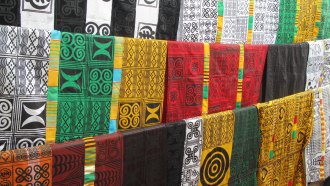
Math
How two outsiders tackled the mystery of arithmetic progressions
Computer scientists made progress on a decades-old puzzle in a subfield of mathematics known as combinatorics.
By Evelyn Lamb
Every print subscription comes with full digital access

Computer scientists made progress on a decades-old puzzle in a subfield of mathematics known as combinatorics.

Notable feats include discovering a planet-eating star, extracting RNA from an extinct animal and more.

In her latest book, mathematician Eugenia Cheng invites readers to see math as more than just right or wrong answers.

Playing with paper and scissors helped one mathematician figure out just how short the twisted loops can be.

Focusing on the relationship between math and culture can boost student learning and expand mathematical knowledge, researchers say.

Floe Foxon is a data scientist by day. But in his free time, he applies his skills to astronomy, cryptology and sightings of mythical creatures.

Smaller cells occur in larger numbers in the human body, and cells of different size classes contribute equally to our overall mass.

The question of how to fairly divide resources attracts game theorists, computer scientists, economists, legal experts and more.

Adding five - and seven - sided cells in pairs during nest building helps the colonyfit together differently sized hexa gonal cells , a new study shows.

Most land plants living today have spiral patterns involving the famous Fibonacci sequence of numbers. But an extinct, ancient plant did not.
Subscribers, enter your e-mail address for full access to the Science News archives and digital editions.
Not a subscriber?
Become one now.